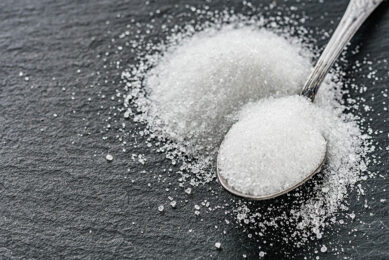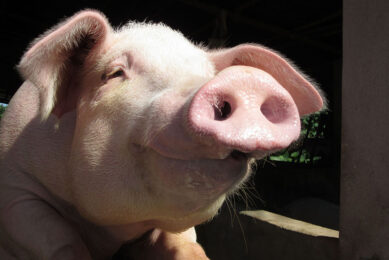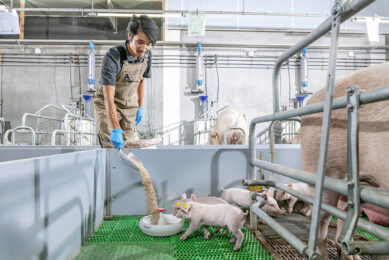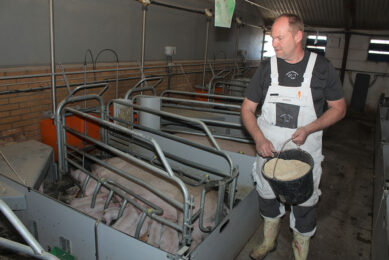Narrowing down pig feed particle size
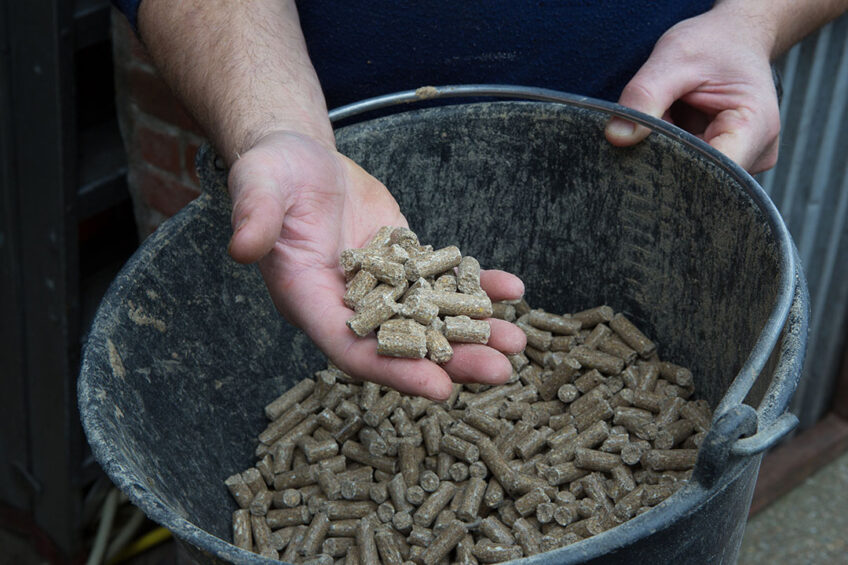
The latest findings on how particle size affects pig performance and what some feed mills are already doing in response.
There is so much still to be discovered. That’s the view of many experts who study pig feed particle size – although much research has already been done to see if there’s a particle size, achieved through a roller or hammer mill, that’s optimal for pig performance. Particle size also affects poultry performance as well.
Particle sizes effect pig performance & gut health
At this point, according to Dr Wouter Hendriks, Dr Menno Thomas and their colleagues at Wageningen University in the Netherlands, there could be a couple of reasons why the range of particle sizes that exist in ground grains can result in inconsistent effects on pig performance and gastric health.
We need to find out more about specific nutrient availability in the various size classes
In a November 2021 paper, they surmised that the nutrient content distribution in particles of different sizes may not be uniform. They also noted that the characteristics of particles of different sizes may differ, leading to differing digestibility levels and either positive or negative effects on pig performance and gut health. In their study of hammer-milled maize and soybean meal, they indeed found that nutrient composition, physical characteristics of materials and digestibility vary among various particle size fractions. And because these differences were found, grinding ingredients into specific size classes can be done to achieve higher digestibility of nutrients.
“We need to find out more about specific nutrient availability in the various size classes,” says Thomas, “but it’s positive that we can already achieve a good distribution of class sizes in maize and soybean meal in feed mills. Some mills in Europe are already grinding to specific particle sizes and then blending those sizes, and the equipment to achieve a larger range of sizes fairly easily can be added if it’s not present. We also need to understand exactly how much particles are broken down in the feed-making process with different types of milling equipment and we are working on practical models to predict this.”
But whatever particle size is aimed for, Dr Francesc Molist cautions that feed processing (hydrothermal processing – which is done to almost all pig feed) modifies particle size. This fact must be remembered, says Molist, manager of research and development at Schothorst Feed Research in the Netherlands.
Particle size in pellets
Let’s look for a moment at pelleted feeds, which are used around the world in various countries and are the sole type of pig feed in the Netherlands. In pellets, particle size is already very fine in order to achieve a high-quality pellet and better nutrient utilisation. In addition, the pelleting process reduces particle size within the pellets even further.
“The pig farmers in the Netherlands have found feed intake is very good with pellets and it’s also cost effective in terms of transportation,” explains Molist. “Because pellets are high energy, you need less of them compared to other types of mash feed. In addition, we have a lot of fibre and food industry by-products available here that due to particle size reduction will increase their nutrient use when fed in pellets, such as soya hulls, DDGS and sugar beet pulp. And there is less dust and less waste at the farm level when using pellets as well, so they should be handled carefully on the farm to prevent degradation.”
Gastric ulcers in pigs & small particle sizes
However, Molist notes that it’s known across the world that pigs fed finely-ground diets with very small particle sizes have a higher risk for gastric ulcers. “We’ve found that it’s very likely this is because finer particles leave the stomach faster than larger particles,” he says. “This results in the pH being lower in part of the stomach, where hydrochloric acid can erode pre-existing intestinal injuries that have been caused, for example, by weaning stress.” A good solution is therefore to increase the proportion of structure by the utilisation of coarse particles in the feed, whether pelleted or not.
Coarse ingredients: Inert fibres
Only one ingredient needs be in coarse form, and that ingredient should be inert fibre. Inert fibre is poor in energy, and therefore its digestibility is basically irrelevant and there is no point in grinding it into smaller particles. Inert fibre includes oat hulls, wheat straw, sunflower hulls and barley groats. The rest of the ingredients can be ground as fine as possible in order to maximise their digestibility. With this overall strategy, both gut health and pig performance can be improved. Molist reports that starting about 3 years ago, “some companies in the Netherlands have been mixing larger roller meal particles with very small hammer mill particles that then go into pellet production.” He’s not sure about elsewhere in the world.
Benefits of adding coarse particles to feed
There are other potential benefits of adding coarse particles to feed, according to researchers at the University of Guelph in Ontario, Canada. They recently noted in All About Feed that it’s possible that coarse feed particle size may promote an increase in bacteria populations producing short-chain fatty acids, and thus contribute to gastrointestinal health by preventing the proliferation and/or virulence of harmful bacteria such as Salmonella spp. and E. coli. These researchers conclude that “generally, based on existing literature, the quantity of finer particles (<0.4 mm) should be as low as possible due to the negative effect on gastro-intestinal tract health, and we need a minimum of the coarsest fractions (>1.6 mm) in order to increase stomach retention and optimised passage rate – whereas the proportion of medium-sized particles (>0.5 to <1.6 mm), which are considered optimal for the pig’s digestive system, should be as high as possible.”
With pigs, we see more and more that fibre should be included in the diet
Looking ahead
Molist and his colleagues are researching the different ways to increase feed structure in pig diets, preferably by using inert fibres such as oat hulls and barley.
Monitoring feed structure
In order to monitor the feed structure “Dry sieving can work before pelleting in mash diets. But to know what pigs are eating the preferred method to evaluate particle size is the wet sieving method” says Molist. “The second method is more costly and laborious, so the feed mills want to use dry sieving before pelleting. However, we need to examine how much the pelleting process will reduce and modify the size and shape of the coarser particles created with coarse grinding.”
Increasing nutrient density
There is also the possibility to increase the nutrient density in feed by using a modified extrusion process (using an expander, which involves high temperatures). All of the diet can undergo expansion or just part of the diet, for example cereals or maize to achieve higher digestibility of the starch they contain. “I would say that a quarter of the companies in the Netherlands are starting to do this,” he says. “First they do expansion and then still they pellet the diets.”
Concentrated fibrous material
Another option is to include ‘concentrated fibrous material’ in pelleted feed, but more research needs to be done. “With pigs, we see more and more that fibre should be included in the diet,” Molist says. “10 years ago, there was only starch, fat and protein in the pig diet and fibre was considered an anti-digestible material, but we have seen through years of research that fibre can modify the physicochemical characteristics of the digesta and can improve gut health and performance. Fibre with low fermentation, called inert fibre, which can increase the transit time in the gut − which is positive, especially in young pigs with too much fermentation − is linked to post-weaning diarrhoea.”
While the puzzle of particle size in feeds and how to preserve it economically has not yet been definitively resolved, progress will continue.




